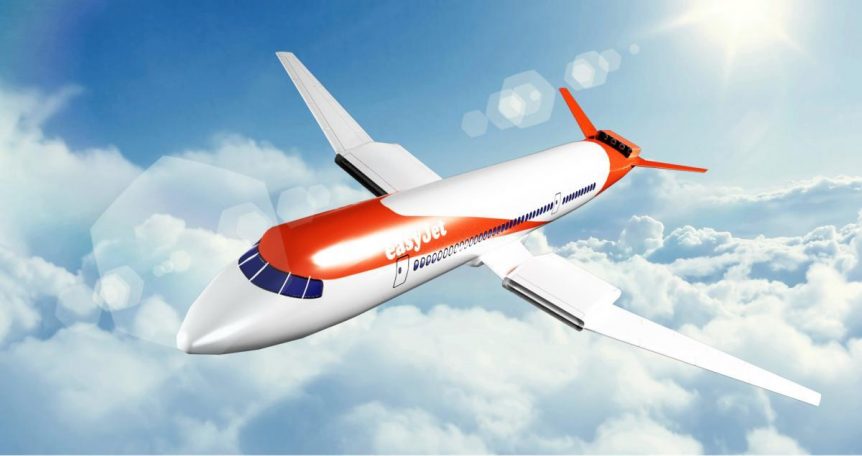Flying high and down under, Amprius, the San Francisco Bay area-based battery developer and maker, announced 450-Watt-hour per kilogram cells, and seemingly immediately secured orders from three major clients. One client of the three is a British specialist in HAPS (High Altitude Pseudo Satellite) aircraft. A probably unrelated sale went to an Australian light plane maker unveiling the country’s “first commercially produced electric aircraft,” a two-seat trainer. BAE/Prismatic BAE Systems has collaborated with Prismatic, a HAPS pioneer, in the development of solar-powered unmanned aerial vehicles (UAVs). The partners have crafted two prototypes of the PHASA-35 unpiloted aerial vehicle, a 35 meter (114.8 feet) span airplane weighing 150 kilograms (330 pounds) capable of carrying a 15 kilogram (33 pound) payload. Solar cells power the craft’s electric motors during the day and charge the Amprius batteries that keep it in the air at night. Amprius claims, “The new 450 Wh/kg cells are the only known commercially available batteries of their kind that …
Heart Aerospace, BAE Collaborate on Batteries
Heart Aerospace, a Swedish startup, has teamed with BAE Systems, a veteran British aerospace supplier, to help with powering its 30-seat, battery-powered airliner. The four-motor craft will include a very large battery pack under the passenger compartment. The need for safety should be obvious. Adding eleven seats to its original 19-seat platform, Heart also brings a turbo generator on board, enabling flights up to 400 kilometers (250 miles) with 30 passengers, or even 800 kilometers (500 miles) with 25. These figures include normal airline range reserves. Partners include BAE Systems, Swedish aerospace group Saab, avionics supplier Garmin, and Aernnova, a Spanish airframe specialist. BAE’s UK-based group’s Controls and Avionics Solutions operation in upstate New York will oversee the batteries and their control and monitoring. This fits BAE’s expertise, with more than 25 years of experience electrifying large, heavy-duty industrial vehicles with over 15,000 power and propulsion systems in service worldwide. This will be critical considering the placement of the batteries. …
Wright Electric Reveals Big Plans
While most anticipated new electric aircraft don’t seem to exceed 50 seats, Wright Electric has begun a more ambitious program for its 186-seat electric airliner, Wright 1. In a January 30 press meeting at the Refinery Hotel in lower Manhattan, Wright announced plans to move forward with their design and testing program for a substantial electric airliner. Wright CEO Jeffrey Engler promised: “Wright Electric is dedicated to bringing low-emissions 186-seat electric planes systems to market. Wright Electric’s mission is to make commercial aviation greener, and our megawatt engine program is the next step in making our mission a reality.” Wright’s plans include moving its headquarters to Albany, New York, “to take advantage of the extraordinary local engineering talent.” Wright will work with BAE Systems, “…to help to accelerate the new technology.” A big part of that new technology will be the 1.5 megawatt electric motor and supporting three kilovolt inverter to control all those currents. Such powerplants are substantially greater …
Running a Mile in Very New Shoes
The Lola-Drayson LeMans Prototype (LMP) did not make it to this year’s LeMans race at the Sarthe track, but did make its racing debut at another prestigious motorsports event – the Goodwood Festival of Speed Hill Climb in England. Nowhere near as long or treacherous as America’s Pikes Peak event, the race is a good test of acceleration, handling and sheer power, which the car displayed with great style. http://www.youtube.com/watch?v=sd-vAq4IDRA Lord Paul Drayson, a former science advisor to the Crown, drove the B12/69EV, a car crammed with new technologies, many of which have been reported on in this blog, and which have potential applications in aircraft. He also set a new record for electric cars in the climb, doing a timed run of 53.91 seconds and placing 11th overall in the July 1 run. Goodwood’s hill climb is only 1.86 kilometers (1.16 miles) with a mere 9 turns, and the fastest official time up the slope was the 1999 McLaren …
Are Wind Turbines Bad for Aviation?
It would be a supreme irony if a part of environmentally-positive power production halted the possibility of “green” aviation by making it unsafe to be in the skies. Luckily, this might not be the major problem some perceive, and solutions are in place or being developed. For a brief time last April the United States Air Force held up construction of an eastern Oregon wind farm that will be the largest in America. Concerned with the possible interference that 300 new giant wind turbines might cause for radar station transmissions in an otherwise remote part of the state, the Air Force stepped in. That was a short-lived interruption, with Oregon’s Senators countering with concerns about the 706 jobs, $130 million in taxes to local counties over two decades and $2.7 million in royalty payments to farmers and ranchers that would be lost by shutting down the project, even though the Federal Aviation Administration issued a “notice of presumed hazard” that halted construction of towers …



